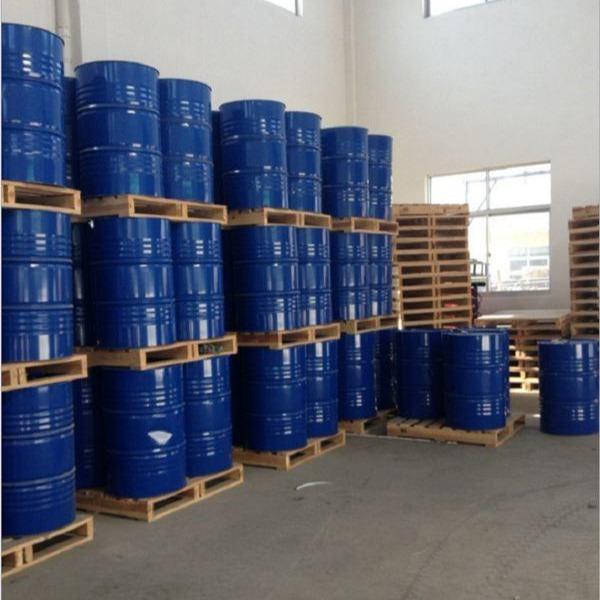-

Butyl CELLOSOLVE Solvent/Butyl CARBITOL Solvent
Ethylene glycol butyl ether is one of the important derivatives of ethylene oxide (EO). It is a green and environmentally friendly solvent, a colorless liquid, with a molecular weight of 118.17, a distillation range of 163-174°C, not volatile, a relative density of 0.9019, a boiling point of 171.1°C, a flash point of 60.5°C, and is toxic. It is miscible with water and hydrocarbon solvents such as linseed oil, and has a strong solubility for synthetic rubber. It is suitable as a solvent for na...Read more -

Diethylene glycol/Triethylene glycol
Diethylene glycol, also known as diethylene glycol, reacts with anhydrides to form esters. It reacts with alkyl sulfates or halogenated hydrocarbons to form ethers. It is mainly used as a gas dehydrating agent and extractant, and is also used as a lubricant and finishing agent for textiles. It is obtained by the reaction of Chemicalbook ethylene oxide with ethylene glycol. Diethylene glycol has been widely used in various cosmetics as a solvent, heat preservation agent, and viscosity control ...Read more -

Polyethylene Glycol
Polyethylene glycol is referred to as “PEG”. It is a high molecular weight compound formed by dehydration condensation of ethylene glycol molecules. The chemical formula is HOCH2(CH2OCH2)nCH2OH. Where n is greater than 4. The average molecular weight is 200-7000. The number after the commercial polyethylene glycol indicates the average molecular weight. For example, polyethylene glycol-400 means that the average molecular weight of the commercial polyethylene glycol is about 400.Read more -

Iso-Propyl alcohol
Isopropyl alcohol is also known as fire wine, dimethyl methanol, 2-propanol, English: isopropylalcohol, the simplest secondary alcohol, and one of the isomers of n-propanol. A colorless, flammable liquid with a strong odor, similar to the smell of a mixture of ethanol and acetone, but not very strong. It is soluble in most organic solvents such as water, alcohol, ether, benzene, chloroform, etc., and can be miscible with water, alcohol, ether, and can form an azeotrope with water. Density (sp...Read more -

n-Propanol
Propanol is a compound in which one hydrogen atom in the propane molecule is replaced by a hydroxyl group. Since the hydroxyl group can replace the hydrogen on the two ends or the middle carbon atom of the carbon chain, two isomers, n-propanol and isopropanol, can be produced. The chemical properties of n-propanol are similar to those of ethanol. It is a byproduct of the synthesis of methanol from carbon monoxide and hydrogen. At room temperature and pressure, it is a colorless, transparent l...Read more -
1,3-Butanediol
Application: 1,3-Butanediol, referred to as 1,3-BDO, has good hygroscopicity, no odor, low toxicity, good water solubility, and also has the reactivity of diols. It is mainly used in the production of plasticizers, unsaturated polyester resins, dehydrating agents for industrial, etc.; it can be used as a moisturizer in cosmetics, applied to lotions, creams, lotions, gels, toothpastes and other products; it can also be used as a humidifier and softener for textiles, tobacco and paper, and an a...Read more -
Benzyl alcohol
Benzyl alcohol, also known as benzyl alcohol, has a molecular formula of C6H5CH2OH and a density of 1.045 g/mL at 25°C (lit.). It is the simplest fatty alcohol containing phenyl groups and can be regarded as hydroxymethyl-substituted benzene or phenyl-substituted methanol. It is a colorless, transparent, viscous liquid with a faint aromatic odor. Sometimes, after being left for a long time, benzyl alcohol will have a slight smell of bitter almonds of benzaldehyde due to oxidation. It is polar...Read more -

DiPropylene Glycol
Dipropylene glycol (DPG for short) is a colorless, odorless liquid at room temperature. It is non-corrosive, has little irritation to the skin, has very low toxicity, and is widely used.Read more -
Propylene Glycol
The scientific name of propylene glycol is “1,2-propylene glycol”. The chemical formula is CH3CHOHCH2OH. The molecular weight is 76.10. There is a chiral carbon atom in the molecule. The racemic body is a hygroscopic viscous liquid with a slightly spicy taste. The specific gravity is 1.036 (25/4℃), and the freezing point is -59℃. The boiling point is 188.2℃, 83.2℃ (1,333 Pa), Chemicalbook is miscible in water, acetone, ethyl acetate and chloroform, and soluble in ether. It can be ...Read more -

Ethyl trifluoroacetate
Ethyl trifluoroacetate is a volatile, colorless, transparent liquid with an ester smell. It is easily soluble in ether, ethanol, chloroform, slightly soluble in water, and can be slowly hydrolyzed in water. The vapor of ethyl trifluoroacetate can form an explosive mixture with air, and it is very easy to burn and explode when exposed to open flames and high heat. It decomposes and releases highly toxic fumes when exposed to high heat, and reacts violently with oxidants.Read more -

Trifluoroacetic acid
Trifluoroacetic acid (TFA molecular formula: CF3COOH) is also known as trifluoroacetic acid. It is a colorless volatile fuming liquid with a similar smell to acetic acid, hygroscopic and pungent odor. It is strongly acidic due to the electron-withdrawing trifluoromethyl group, and its acidity is 100,000 times stronger than acetic acid. Melting point -15.2℃, boiling point 72.4℃, density 1.5351 g/cm3 (1℃). It is miscible with water, fluorinated hydrocarbons, methanol, ethanol, ether, acetone, b...Read more -

Hexane
Hexane is also known as hexane, with a molecular formula of C6H14 and a molecular weight of 86.2. It belongs to the class of straight-chain saturated aliphatic hydrocarbons and is obtained by cracking and fractionating crude oil. It is a colorless, gasoline-smelling, volatile liquid with a melting point (MP) of 95°C, a boiling point of 68.95°C, and a vapor density of 2.97 (air = 1). It is almost insoluble in water, but easily soluble in chloroform, ether, and ethanol. Hexane is an organic sol...Read more





